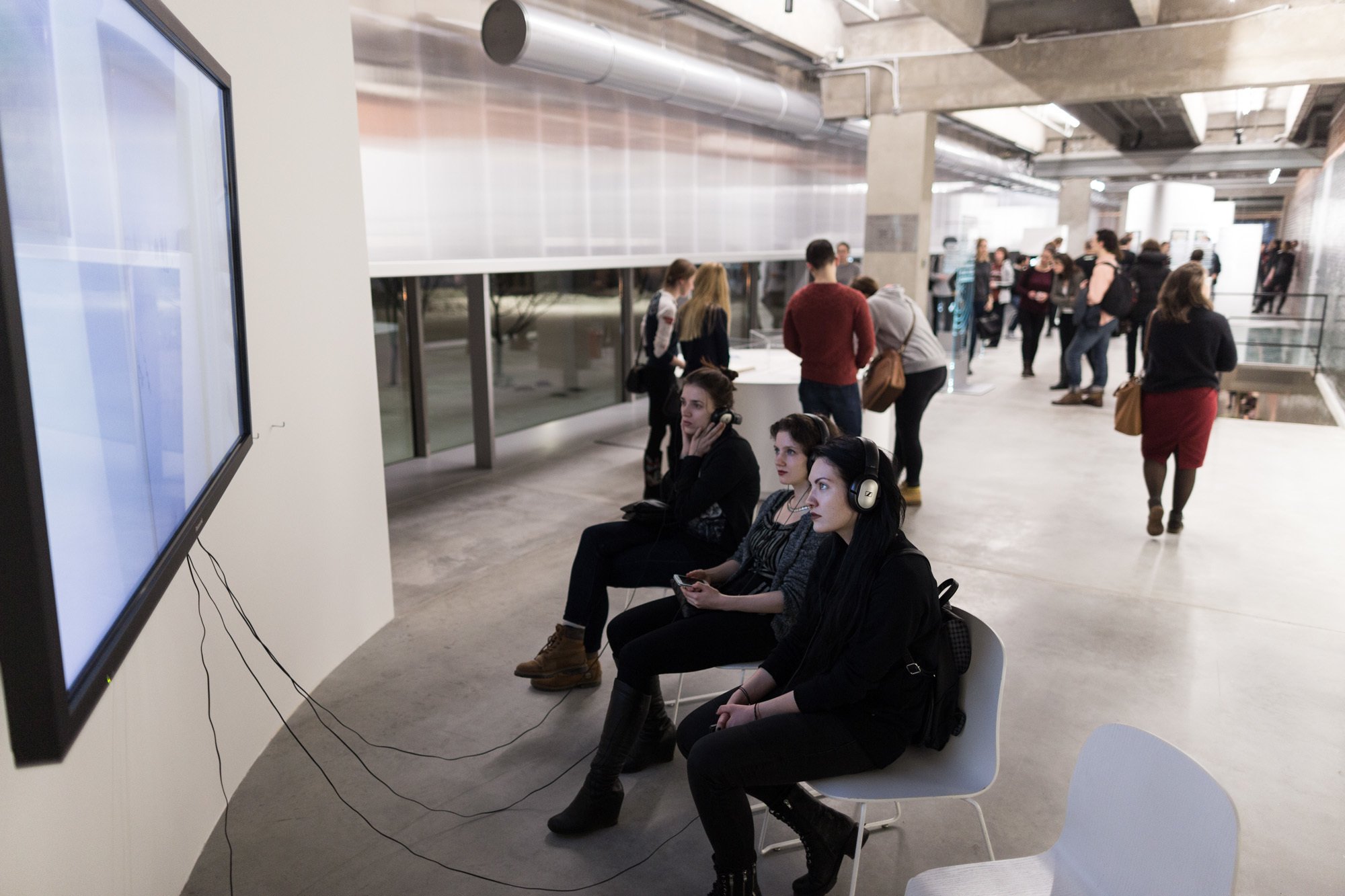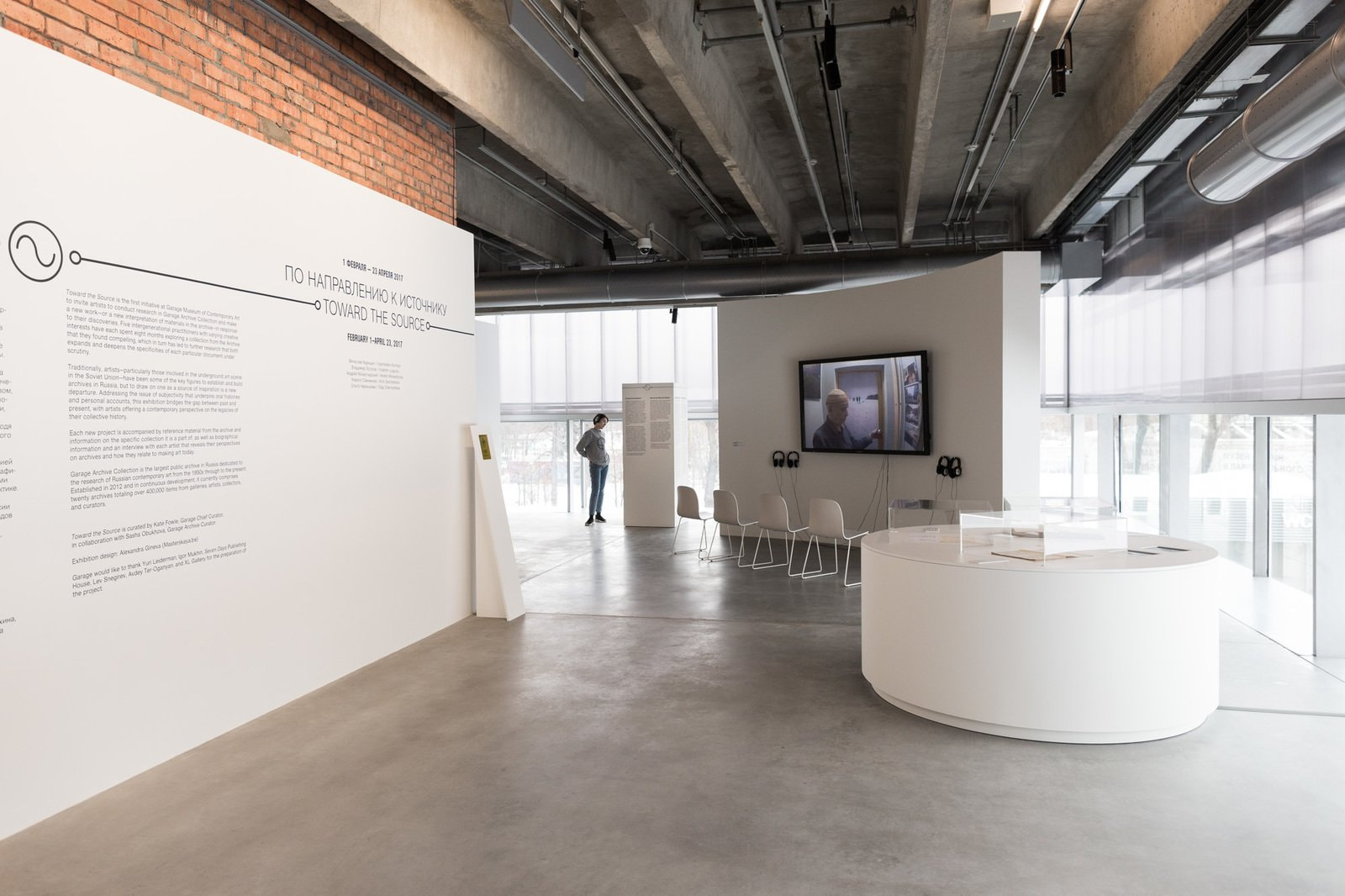Andrei Monastyrsky. Verbal Flux on an Empty Action
Artist's description for Verbal Flux on an Empty Action which is presented as part of Toward the Source.
This recording is of a lecture entitled "A Demonstration of a Demonstration." The lecture comprises alternating, easily distinguished texts (both in terms of meaning and clarity); "rapid" texts; excerpts from a recording of the artist’s walk along Kondratyuk Street; and a collage of recordings of television programs.

The "rapid" texts are a recording of a reading of excerpts from Andrei Monastyrsky's article "A Demonstration of a Demonstration." The reading is carried out as though it were through a constantly vibrating balance of thought and the flow of speech. The artist reads normally “for himself,” as he understands the content, but he narrates at the highest possible speed in an attempt to keep up with the “rapidity" of thought. As a result, the auditory production appears to be a constant, semantically indistinguishable flow of speech. The "rapid" texts are read with a low volume electrical ring playing in the background.
1. Distinctly-read text: Successful actions are those which the viewer does not have time to evaluate or compare with something familiar. The speed of the aesthetic attack on the viewer's perception must exceed the speed of their comprehension. A successful “empty action” or “trip out of town” is when one hits aesthetic arrangements like a hurricane, destroys them, sweeps them away unexpectedly, vanishes into emptiness without filling it with anything.
2. "Rapid" text: Three pages of single-spaced, typewritten text are read in 2 minutes 55 seconds, followed by 5 seconds of the ringing sound which was the background to the reading. Sometimes "anticipation," "and so forth," and "of the comical" can be distinguished.
3. Distinctly-read text: When anticipation appears in its pure form and its two sides—viewers and organizers—can be distinguished, and when the link between them is an intentionally inauthentic, comic version, such that the anticipation continues to grow, it eventually becomes clear that what is occurring is nothing less than a demonstration of a demonstration: Our consciousness is freed from the necessity of having anything to understand, to evaluate, to compare to a concrete reality. And, whether one likes it or not, it is compelled to go beyond the limits of the conditional in art and submerge in pure distancing, the direct perception of the natural world—forest, field, snow, sky—and the passing of time within the eternal radiance of nature's beauty; to immerse oneself in an accidental sea detached from our comedy of cohesive existence.
4. "Rapid" text: 25 seconds.
5. Distinctly-read text: In order that everything occurs exactly so and not otherwise, in order to receive a sensual experience of the transcendental, to encounter a distancing from the flow of exterior reality, the organizers should make a series of aesthetic reductions. The demonstration of a demonstration manifests as one of these. "We look at how we look." "We listen to how we listen." "We understand how we understand." Common to all these conditions is the removal of artistic concreteness in any of its manifestations."
6. Ten-minute documentary recording of the author's walk along Kondratyuk Street: Footsteps on the stairs; the sound of an opening umbrella; then, the sound of rain; the sounds of passing cars; the voices of passers-by. The artist identifies the house numbers on Kondratyuk Street and says, "The stairs at the end of Kondratyuk Street" (the walk across the square to VDNKh metro station is not recorded; the recording recommences on the way back with the words, "The stairs leading to Kondratyuk Street"). Then there is a spoken interpolation, created in a domestic acoustic setting (in the artist's voice): "The stairs toward Kondratyuk Street." On the recording of the way back, these domestic interpolations are made after each street remark (the identification of house addresses, a pile of earth, a kindergarten, a bus stop). In addition to this, there is a rhythmic, fairly loud electronic sound, produced by wobbling an amp plug. The soundtrack of the walk concludes with the sharp sound of steps echoing up the stairs, the opening of the apartment door, and the declaration of the date of the walk: Moscow, October 26, 1984."
7. Distinctly-read text, but without a beginning: "... something unconventional and astounding should occur. From the position of the organizers, it would be unforgivable to deceive the viewer, who has undertaken such a lengthy journey, to show them something uninteresting. Yes, but what does "uninteresting" mean? This could, after all, be a mistake. What interests the organizers is one thing, while for the viewers it might be something completely different. We do not make a mistake if we retain the viewer’s personal immunity, not stimulating in any way the layer of interest in their consciousness. The viewer rides (great), walks through the woods (great), the viewer stands and waits (great). But when the viewer understands something, this is suspect.
8. Collage of television programs: quick switches between music, spoken word, and the buzzing of a blank channel. It lasts 55 seconds.
9. Distinctly-read text, without a beginning: ". . .-en in their comic light. Such is the content of their artistry. Overalls, ropes, balloons, bells, walking across a field, lying in pits, and so forth. The concrete artistic zone of action is filled with absurd-comic events. The fact of the matter is that these events, these displays are minimal—there are very few of them. This is typically a single subject—light, sound, or a routine event. Minimality elicits the failure of the comic sphere. The insufficient fullness of a specific artistic zone. Such unplanned failure draws the viewers and organizers into this zone like a vacuum. The organizers, like objects and actions in their meaning as viewers and actors, begin to belong to this zone and become its absurd-comic characters. The viewers and organizers are bound together by their anticipation of the beginning of the act, which has not yet begun, which is delayed, and which redirects attention towards some kind of absurd nonsense, some kind of obstruction or hindrance. This is when they come alive and interact with each other like characters in a comedy, in an attempt to realize some essential connection, some fusion. It is at this point that a higher consciousness of the encounter becomes apparent. It begins to see, feel, and breathe the elements of distancing with their native air, their essential given. The superconsciousness of the group sees authentic reality, while our enchained consciousness remains within everyday life. Our common culture revolves around itself, trying to bite its own tail in a comic dance.
10. Next, the last paragraph of the article is read distinctly (see point 3), but only up to the words, ". . . demonstration of a demonstration". After these words, with slightly different acoustics, we hear the words "The artist goes up to the apparatus and turns off the microphone".
AM
October 1984
